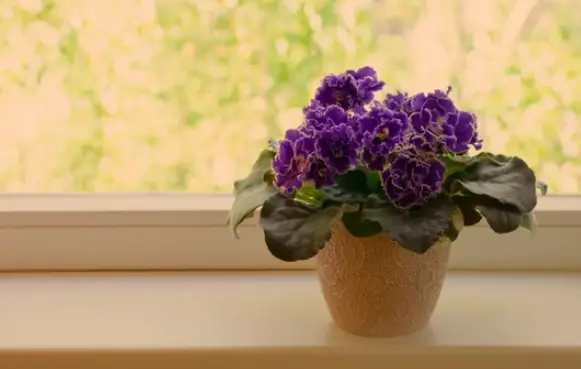Welcome to the captivating world of African violet plants.
If you’re an indoor gardening enthusiast looking to add a touch of charm and color to your home, then African violets are the perfect choice.
These delightful plants have been capturing the hearts of plant lovers for generations, and it’s easy to see why!
In this post, we will take you on a journey through the fascinating world of African violet plants.
We’ll explore their history, origin, and the diverse array of species available, each boasting its unique beauty and character. From their velvety leaves to their vivid and captivating blossoms, African violets are sure to bring joy and elegance to any indoor space.
Whether you’re a seasoned green thumb or a beginner in the world of gardening, our aim is to equip you with the knowledge and tips you need to care for these lovely plants and help them thrive.
The Fascinating World of African Violet Plants
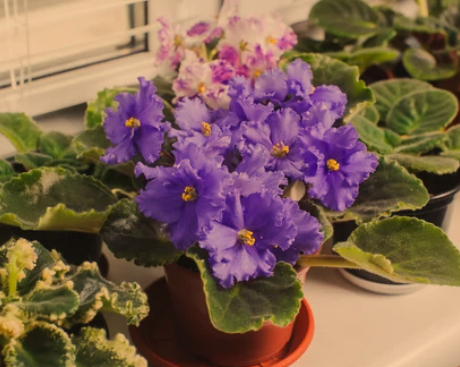
The fascinating world of African violet plants is a treasure trove of beauty, diversity, and botanical wonder. These charming and delicate plants have been captivating plant enthusiasts for over a century, and their popularity shows no sign of fading. Let’s embark on a journey to explore the allure and unique characteristics that make African violets so special.
A Rich History and Origin: African violets (Saintpaulia ionantha) are native to East Africa, where they were discovered in the late 19th century by Baron Walter von Saint Paul-Illaire. The plants were initially found in Tanzania, growing in the rocky terrain of the Usambara Mountains. Their discovery sparked interest among botanists and collectors worldwide, leading to the introduction of African violets into the horticultural trade.
An Array of Stunning Varieties: African violets come in an astonishing array of colors, shapes, and sizes. From the classic violet and lavender hues to pink, blue, red, white, and even variegated patterns, there’s an African violet to suit every taste. Additionally, breeders have developed miniature and trailing varieties, perfect for compact spaces or cascading displays.
The Art of Leaf and Blossom: One of the most endearing features of African violets is their soft, velvety leaves, which form rosettes that showcase the delicate blossoms like works of art. The flowers themselves boast intricate patterns and ruffled edges, resembling miniature masterpieces that can brighten any room.
Challenging Yet Rewarding Care: While African violets are known for their beauty, they can be a bit temperamental when it comes to care. Providing the right balance of light, temperature, humidity, and watering can be a challenge. However, once you master the art of caring for these lovely plants, the rewards are truly gratifying, as they will grace you with abundant blooms and lush foliage.
A Sense of Serenity and Well-Being: Beyond their aesthetic appeal, African violets have also been associated with positive emotional and psychological benefits. Studies have shown that caring for plants, including African violets, can reduce stress and anxiety while promoting relaxation and a sense of well-being.
A Community of Enthusiasts: The world of African violet plants has cultivated a vibrant and enthusiastic community of collectors and growers. Online forums, social media groups, and local plant societies provide a platform for enthusiasts to share their knowledge, experiences, and even trade or sell rare varieties.
Choosing the Right Environment
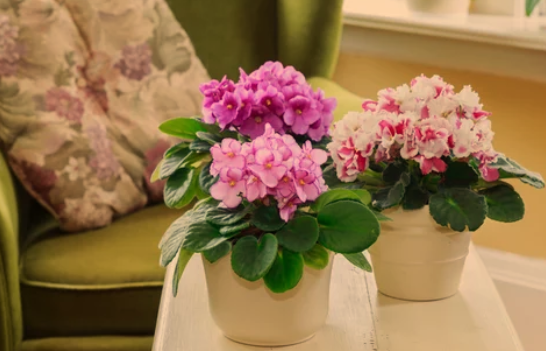
Choosing the right environment for African violet plants is essential for their health and overall well-being. These delicate beauties thrive when provided with specific growing conditions that mimic their natural habitat. Let’s delve into the key factors to consider when creating the perfect environment for your African violets.
Light:
African violets prefer bright, indirect light. Place them near east or west-facing windows where they receive gentle morning or afternoon sunlight. Avoid direct exposure to intense sunlight, especially during the hottest parts of the day, as it can scorch their delicate leaves.
If natural light is insufficient, you can supplement it with artificial lighting. Specialized grow lights, such as fluorescent or LED lights, designed for indoor plants, can be used to provide the necessary light spectrum for healthy growth.
Temperature:
African violets prefer a moderate and stable temperature range. Aim to keep the ambient temperature between 65°F to 75°F (18°C to 24°C). Avoid exposing them to drastic temperature fluctuations or cold drafts, which can stress the plants and lead to leaf damage or blooming issues.
Humidity:
Adequate humidity is crucial for African violets, as they naturally thrive in regions with higher humidity levels. Indoor environments, especially during the winter months with indoor heating, tend to be dry, which can negatively affect the plants.
Increase humidity around your African violets by using a humidifier or placing a shallow tray filled with water and pebbles near the plants. As the water evaporates, it will create a more humid microclimate around the violets.
Potting Soil and Containers:
Use a well-draining, loose, and porous potting mix specifically formulated for African violets. The ideal mix should provide good aeration to the roots and prevent waterlogging. Avoid using regular garden soil, as it can retain too much moisture and lead to root rot.
Choose pots or containers with drainage holes to allow excess water to escape. African violets prefer growing in slightly tight quarters, so select pots that are about one-third the diameter of the plant’s leaves.
Air Circulation:
Good air circulation is essential to prevent the buildup of stagnant air, which can contribute to fungal diseases. Ensure that there’s sufficient space between plants to allow air to flow freely. Gentle airflow from a fan set on low can also help maintain a healthy growing environment.
Watering and Feeding
Watering and feeding are critical aspects of African violet care. Properly maintaining these aspects will contribute significantly to the health, growth, and blooming of your African violets. Let’s delve into the best practices for watering and feeding these charming plants.
Watering:
- Consistency is Key: African violets prefer consistent moisture, but they dislike waterlogged soil. Allow the top inch of the potting mix to dry out between watering sessions. Stick your finger into the soil to check the moisture level; if it feels dry, it’s time to water.
- Bottom Watering: The best way to water African violets is from the bottom. Place the pot in a shallow container of water and allow the plant to absorb water through the drainage holes. This prevents water from coming in direct contact with the leaves, reducing the risk of leaf spots and fungal diseases.
- Avoid Wetting the Leaves: Water droplets on the leaves can lead to unsightly water spots and potentially cause damage to the velvety texture. If water does splash onto the foliage during watering, gently blot it with a soft cloth.
- Room Temperature Water: Use water that is at room temperature or slightly warmer. Cold water can shock the sensitive roots and cause stress to the plant.
Feeding:
- Balanced Fertilizer: African violets benefit from a balanced fertilizer with equal parts of nitrogen (N), phosphorus (P), and potassium (K), such as a 20-20-20 or 14-12-14 NPK ratio. Choose a water-soluble fertilizer specially formulated for African violets.
- Dilute Solutions: Avoid over-fertilization, as it can lead to salt buildup in the soil, causing root damage. Follow the instructions on the fertilizer package and use a diluted solution. Typically, applying fertilizer once every 2-4 weeks during the growing season (spring and summer) is sufficient.
- Alternate with Plain Water: To prevent salt buildup, occasionally water your African violets with plain, room-temperature water to flush out excess salts from the soil.
- Hold Off During Dormancy: During the winter months, African violets enter a period of dormancy. Reduce the frequency of fertilization or stop feeding altogether until they resume active growth in the spring.
Repotting and Propagation
Repotting and propagation are essential practices for maintaining healthy and vigorous African violet plants. Repotting allows the plants to have ample space for their roots to grow and thrive, while propagation enables you to create new plants from existing ones. Let’s explore the steps for successful repotting and propagation of African violets.
Repotting African Violets:
- Timing: Repot African violets when you notice their roots have outgrown the current container or when the plant becomes top-heavy. The best time for repotting is during the active growth phase in the spring or early summer.
- Prepare the New Pot: Choose a slightly larger pot with drainage holes and fill it with a well-draining African violet potting mix. The new pot should be about one-third larger in diameter than the current pot.
- Gently Remove the Plant: Carefully lift the African violet from its current pot. If the plant is root-bound, gently loosen the outer roots to encourage new growth.
- Planting: Place the African violet in the center of the new pot and add fresh potting mix around the roots. Press the soil gently to ensure proper contact with the roots.
Propagation of African Violets:
- Leaf Propagation: Select a healthy leaf from the parent plant, making sure it is free from any damage or disease. Cut the leaf from the plant, including a short stem segment.
- Prepare the Propagation Medium: Use a clean, sharp knife to make a small incision at the base of the leaf’s stem, exposing the vascular tissue. This step is crucial for water uptake during propagation. Prepare a container with a mixture of peat moss and perlite or a specialized propagation mix.
- Insert the Leaf: Gently insert the leaf’s stem into the propagation medium, ensuring the cut end is in contact with the mix. Water the medium lightly to settle it around the leaf.
- Enclose for Humidity: Cover the container with a clear plastic bag or a transparent lid to create a humid environment. This helps retain moisture and promotes successful rooting.
- Provide Indirect Light: Place the container in a location with bright, indirect light. Avoid direct sunlight, as it may cause excessive heat and moisture loss.
- Patience is Key: It may take several weeks for new plantlets to emerge from the base of the leaf. Once the plantlets have developed enough roots and leaves, carefully separate them from the parent leaf and pot them individually.
Preventing and Managing Pests and Diseases
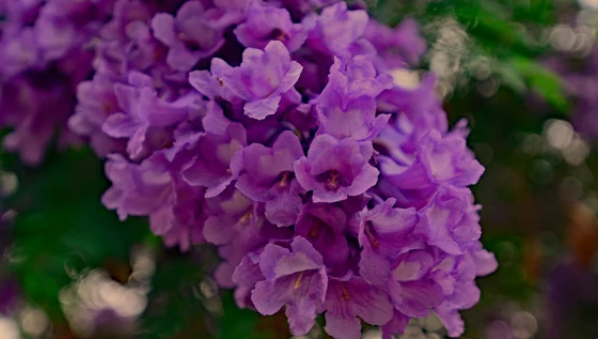
Preventing and managing pests and diseases is crucial to maintaining the health and beauty of your African violet plants. These delicate plants can be susceptible to certain pests and diseases, but with proper care and vigilance, you can keep them thriving. Let’s explore some effective preventive measures and management strategies to protect your African violets.
Preventive Measures:
- Quarantine New Plants: When introducing new African violets to your collection, isolate them from your existing plants for a few weeks. This allows you to monitor the new plants for any signs of pests or diseases before integrating them with the rest of your collection.
- Maintain Good Hygiene: Keep your growing area clean and tidy. Regularly remove fallen leaves, debris, and dead blooms from the soil surface to reduce the risk of pests and diseases.
- Avoid Overwatering: Excessive moisture in the soil can lead to root rot and create a favorable environment for fungus gnats. Ensure proper drainage and allow the top inch of the potting mix to dry out between watering.
- Use Sterilized Tools: When working with your African violets, use clean and sterilized tools to prevent the spread of pests and diseases. Rinse your tools with a mixture of water and mild bleach, or use rubbing alcohol before use.
- Control Humidity: Maintaining appropriate humidity levels helps prevent fungal diseases. If the air is too humid, consider improving ventilation or using a dehumidifier. If the air is too dry, use a humidifier or place a shallow tray of water and pebbles near the plants.
Managing Pests:
- Spider Mites: These tiny pests can be effectively managed by regularly misting your African violets to increase humidity. If a severe infestation occurs, use insecticidal soap or neem oil spray, following the manufacturer’s instructions.
- Aphids: Use a gentle stream of water to wash off aphids from the leaves. Alternatively, apply neem oil or insecticidal soap as a natural remedy.
- Mealybugs: Remove mealybugs manually with a cotton swab dipped in rubbing alcohol. For heavy infestations, use insecticidal soap or neem oil.
Managing Diseases:
- Powdery Mildew: Prevent powdery mildew by providing good air circulation around the plants. If it occurs, apply a fungicide specifically formulated for powdery mildew on African violets.
- Root Rot: To prevent root rot, ensure proper drainage and avoid overwatering. If your African violet shows signs of root rot, consider repotting it with fresh, well-draining soil and trim away any affected roots.
Promoting Blooming and Pruning
Promoting blooming and pruning are essential techniques to encourage your African violet plants to produce abundant and stunning flowers while maintaining a compact and healthy shape. Let’s dive into the strategies for promoting blooming and the proper ways to prune your African violets.
Promoting Blooming:
- Light Exposure: Adequate light is crucial for flowering. Ensure your African violets receive bright, indirect light for at least 10-12 hours a day. Supplemental artificial lighting can be beneficial, especially during the darker months of the year.
- Temperature: African violets prefer moderate temperatures, ideally between 65°F to 75°F (18°C to 24°C) during the day and slightly cooler at night. Consistent temperatures will encourage blooming.
- Fertilization: Feed your African violets with a balanced fertilizer during their active growing season (spring and summer) to support flowering. Choose a fertilizer with higher phosphorus (P) content, as it promotes flower production.
- Deadheading: Remove spent or faded flowers regularly to encourage the production of new blooms. Pinch or snip off the flower stalks just above the leaf rosette using clean and sterilized scissors.
- Avoid Stress: Keep your African violets stress-free by maintaining consistent care. Avoid drastic changes in light, temperature, and watering, as this can inhibit flowering.
Pruning African Violets:
- Pinching: Pinching involves removing the growing tips of young shoots to promote branching and a bushier growth habit. Gently pinch off the top portion of the stem between your thumb and forefinger to encourage lateral growth.
- Removing Old Leaves: Over time, lower leaves may become discolored or less attractive. Remove these older leaves by gently twisting and pulling them away from the crown. Be cautious not to damage the growing center (crown) of the plant.
- Rejuvenation Pruning: If your African violet becomes leggy or loses its compact shape, consider rejuvenation pruning. Trim back the plant by removing some of the older, elongated stems. This will encourage new growth and a more compact form.
- Propagation: Propagate your African violets through leaf cuttings to refresh and rejuvenate older plants. This process encourages new growth and the development of more robust blooming stems.
Display and Arrangement
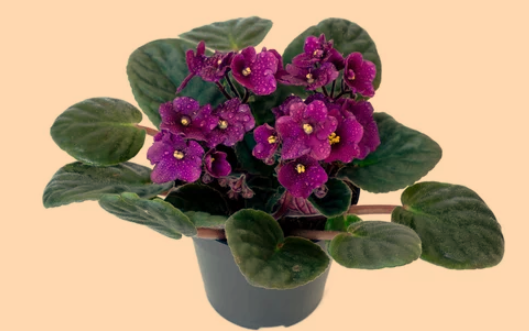
African Violet Plants
Creating a beautiful and captivating display of African violets is a delightful way to showcase their unique beauty and charm. These exquisite plants can be arranged in various ways to enhance their visual appeal and complement your indoor space. Let’s explore some creative ideas for displaying and arranging African violets:
- Group Plantings: Arrange several African violet plants of different colors and varieties together on a tabletop or plant stand. Groupings create a striking visual impact and allow you to appreciate the diversity of their blooms and foliage.
- Color-Themed Displays: Create themed displays based on color combinations. Pair African violets with complementary hues or create a monochromatic display for a harmonious and eye-catching arrangement.
- Terrarium Gardens: Plant African violets in a glass terrarium or a large, clear container to create a mini indoor garden. Incorporate other small plants, decorative elements like rocks or mini figurines, and add a layer of moss for a whimsical touch.
- Hanging Baskets: Consider using trailing or semi-trailing African violet varieties in hanging baskets. Hang them near a window or in a well-lit corner to let their cascading leaves and blossoms spill gracefully.
- Indoor Window Garden: Place a row of African violet plants on a windowsill to create a lovely indoor window garden. This not only provides the plants with the ideal light they need but also adds a splash of color to your room’s view from the outside.
- Vintage Teacups or Pots: Repurpose vintage teacups, mugs, or small decorative pots as unique planters for individual African violet plants. The charming mismatched look adds character and interest to your display.
- Tiered Plant Stands: Utilize tiered plant stands or shelves to create a multi-level display of African violets. This not only maximizes space but also adds dimension and visual appeal to your indoor garden.
- Glass Cloche or Bell Jar: Place a single African violet or a small grouping under a glass cloche or bell jar for an elegant and sophisticated display. The transparent cover protects the plants while adding a touch of elegance.
- Theme-Based Display: Create a theme-based display by incorporating decorative elements that complement your African violets. For example, add fairy garden accessories, vintage botanical prints, or decorative plant labels.
- Living Centerpiece: Design a living centerpiece for your dining or coffee table using a collection of African violets in a shallow dish or a decorative tray. Add decorative pebbles or miniature fairy garden items to create a whimsical atmosphere.
Conclusion
In conclusion, African violet plants truly belong to the enchanting world of indoor gardening. Their captivating beauty, vibrant colors, and delicate leaves have made them a favorite among plant enthusiasts for generations. With the right care and attention, these charming plants can bring joy, elegance, and a touch of nature to any indoor space.
In this blog post, we’ve explored the fascinating world of African violet plants, delving into their rich history, diverse varieties, and the artistry of their leaves and blooms. We’ve discussed the importance of choosing the right environment, including providing the ideal light, temperature, humidity, and proper potting soil for these lovely plants to thrive.
We’ve also covered essential aspects of African violet care, such as watering and feeding, which play a vital role in their growth and well-being. By understanding their specific needs and following best practices, you can ensure your African violets remain healthy and vibrant, producing an abundance of stunning flowers.
We’ve learned the art of repotting and propagation, valuable techniques to maintain the vigor of the plants and expand your collection. Properly repotting and propagating African violets allow you to provide them with ample space and create new plants to share or adorn various parts of your home.
Also, we’ve explored effective methods for preventing and managing pests and diseases, safeguarding your African violets from potential threats. By adopting a proactive approach and maintaining good hygiene, you can keep your plants flourishing and free from unwanted pests and ailments.
Finally, we’ve delved into the creative world of displaying and arranging African violets, where you can let your imagination roam free. From group plantings to themed displays, and hanging baskets to vintage teacups, the possibilities are endless, and each arrangement brings its unique charm and personality.
As you embark on your journey with African violet plants, remember that each one is a living work of art that deserves your care and appreciation. With the knowledge and tips shared in this blog post, we hope you’ll find joy in cultivating and showcasing these delicate beauties, creating a harmonious and captivating indoor garden that fills your home with beauty, serenity, and the wonders of nature.

